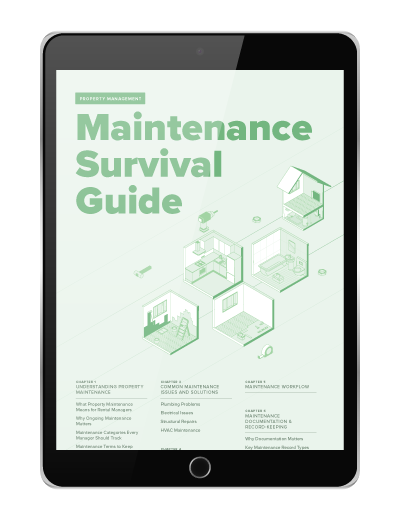It doesn’t matter what kind of business you run: you need a reserve fund to pay for future repairs, capital improvements and expenditures.
And, as a property manager entrusted with substantial cash reserves, you have a fiduciary responsibility to safeguard them from needless risk and ensure they’re available when you, your residents, or owners need them.
Here’s what you need to know about managing your reserve accounts:
Your fiduciary responsibility
Fiduciaries are held to the highest legal standard of fair dealing and good faith recognized under the law. That means that you must make decisions solely in the best interests of the association or client landowner. Reserve funds cannot mingle with money meant for any other purpose (whether it belongs to you or your company), it cannot be loaned out to residents or relatives, and it certainly cannot be used to paid your own paycheck (or that of any other employee).
If there’s ever a problem with the funds, you’ll have an uphill battle proving you did not mishandle the funds, because the burden of proof for those making the accusations is relatively low.
You can even be held liable for honest mistakes and oversight, your decision-making must meet a standard of reasonable prudence. For example, if you lose money on a bad investment, and you could be accused of negligence.
That means fiduciaries, in practice, can’t get away with as much in losses as many others. And in the world of property reserve management, unless you have a document in writing authorizing you to be aggressive in your investments even at the expense of a high degree of risk, you can’t get away with losing very much at all.
Make sure you have adequate directors & officers’ liability insurance in place to protect you against accusations of wrongdoing or negligence.
Now that you’re taking your responsibilities seriously, what should you do with the money? The answer first depends on your expected needs.
Start by thinking of your reserve funds as “buckets” of money:
1: The ‘right now’ bucket
This is money you need to have available right now. Liquidity and immediate access is key.
You can keep this money in a regular checking or credit union account. You will want quick access to the money via paper checks or debit cards. Be sure the bank you choose is insured by the FDIC or National Credit Union Association (NCUA).
How much should you set aside? Known expenses for the next 30 days, plus your insurance deductible, plus some petty cash to operate the daily activities of the association or Board is a good start. If you don’t already keep an attorney on retainer, be sure to consider potential legal expenses.
Don’t worry about yield for this money, you’ll make up for it in other buckets.
2: Intermediate-term money
This is money for planned repairs and anticipated expenses for the next one to five years.
Money should be kept in any of the following accounts:
- Certificates of Deposit: CDs are FDIC or NCUA insured, and you can place money in different accounts. For example, a 1-year CD, a 3-year CD, and a 5-year CD depending on when you plan to use the money.
- Money Markets: These are not insured, but are generally considered safe and are more liquid than CDs. Some investment professionals consider them to be “cash equivalent,” but it is theoretically possible to lose money in a money market fund. If you plan to use the money farther out than 5 years, a CD is a better choice.
- Bonds: There are some liquidity risks with bonds, for example, if you need to sell sooner than planned, you could lose money if interest rates are higher than when you bought the bond. And, if the bond issuer goes out of business, it could take months or years to see money from it. The only way around this is to buy Treasuries. Individual bonds alleviate some of the interest rate concerns, but may not be liquid if they are smaller.
- Bond funds: These are more diverse than individual funds, naturally. While any single non-treasury bond can theoretically go bust, it’s not likely that hundreds or thousands of issues in a given bond fund will go bust at the same time. But you will get some market volatility in any bond fund, and some interest rate volatility
How much money should be in these accounts? You should have enough money to cover your baseline repair costs, plus any estimated capital improvements. If you’ve done a reserve study, you’ll have a pretty good idea for what these expenses will be.
Put enough money in this bucket to cover these expenses, discounted back to net present value by an appropriate interest rate. For example, if you have a 4% interest rate, and you have an expense planned out in the next year, you should have 96% of the cost in the account.
3: The ‘long-term’ bucket
This is money earmarked for anticipated expenses at least five years out. For roof repair or maintenance, you can start adding money to this account now, even if you won’t need it for 20 years.
For this bucket, you can afford to take on some risk in the anticipation of greater returns. You can also trade some liquidity for yield.
Which is why mutual funds are a common recommendation for this bucket. A mix of a total bond market index fund and an S&P 500 index fund, or total stock market index fund are reasonable, low-cost vehicles for long term money.
In this way, you’ll be funding these expenses with safe money investments and not taking very much risk at all.
Of course, you can afford more risk with long term money. In that sense, there are also more ways to get into trouble.
Let’s say you add some equities into the mix for planned expenditures in ten or twenty years. That’s great, but you need to carefully calibrate your investment policy statement to cover your liabilities. Or, give your asset manager an investment policy statement to protect both your asset manager and yourself. For example, your investment policy statement could specify that at no time do you want your total reserve fund under management to have more than 40 percent in equities.
As the property manager, you have an obligation to provide oversight and verify that your instructions to the asset manager(s) are being carried out.
Read more on Accounting & Reporting

